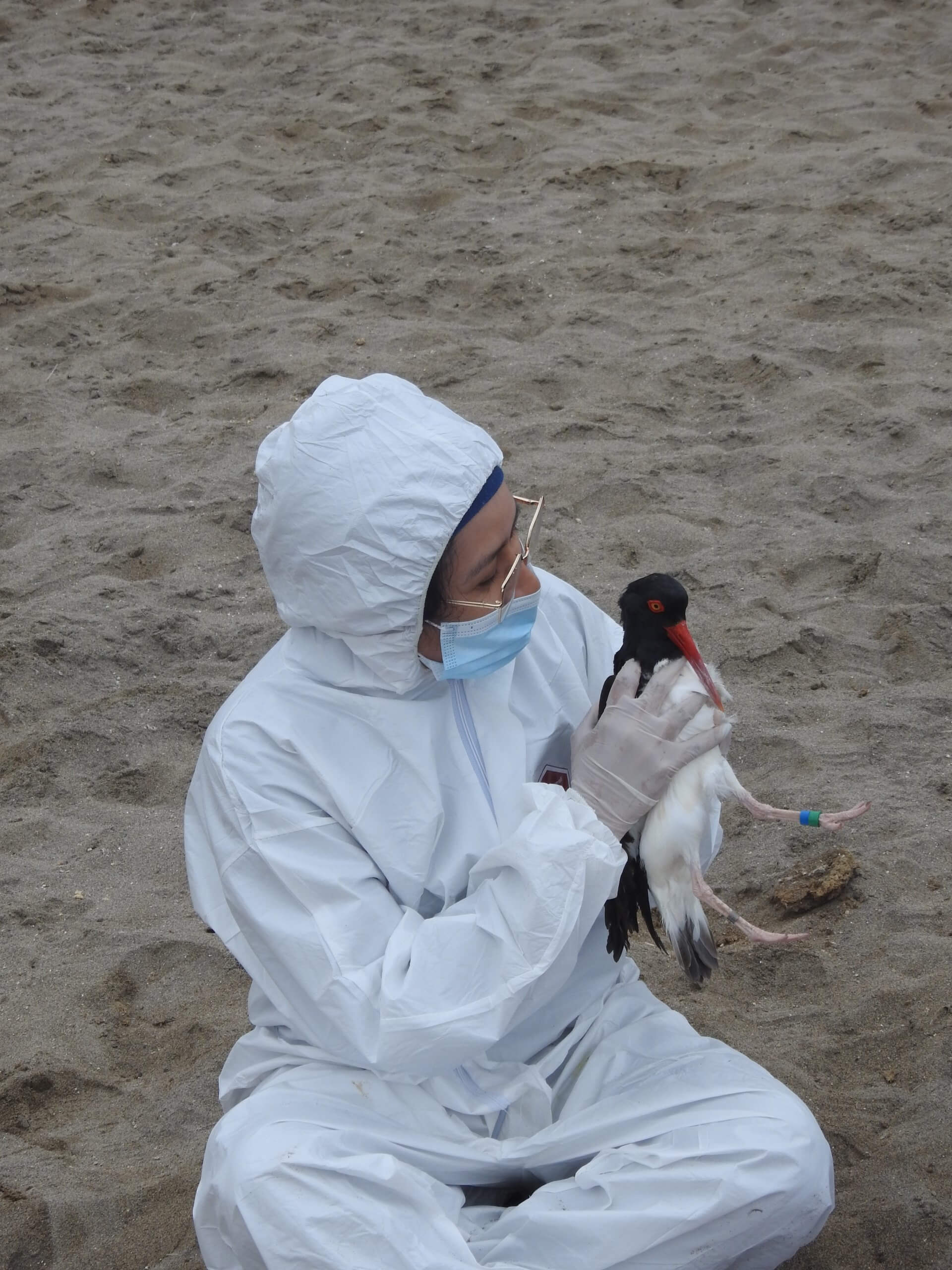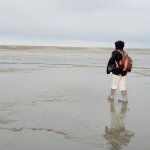Shorebirds face growing challenges in their struggle to survive in a rapidly changing world. From habitat destruction to the impacts of human activity, every conservation effort matters. The Manomet Small Grants Program for Shorebird Conservation in the Neotropics supports young researchers who want to make a difference, providing them with the boost they need to develop innovative conservation or research projects focused on shorebirds in the Neotropics.
One of the 2023 grant recipients was Lisset Carito Gómez Martínez, from Peru, who is leading a project focused on the nesting of the American Oystercatcher (Haematopus palliatus) along the central coast of her country. Through monitoring, banding, and environmental education, her work aims to understand how human activity affects the reproduction of this species—and what actions we can take to protect it.


Lisset is leading a project focused on the nesting of the American Oystercatcher through monitoring, banding, and environmental education. Photo: Courtesy
How does this program contribute to shorebird conservation in your country or region?
This program directly contributes to the scientific knowledge of the American Oystercatcher (Haematopus palliatus) on beaches along Peru’s central coast and helps us understand the effects of human activity on its reproduction.
Fieldwork included nest monitoring starting in September 2024, banding of individuals during the breeding season, documenting human disturbances, and observing bird behavior with camera traps.
In addition, with support from the Center for Ornithology and Biodiversity (CORBIDI), we conducted environmental education activities. These events allowed us to discuss the main threats facing shorebirds and what actions we can take to improve the situation. We also held working groups with local stakeholders at the Los Pantanos de Villa Wildlife Refuge, including public and private institutions, to propose short- and long-term conservation measures in nesting areas.
Which key parts of your project were supported by the Small Grants?
The Small Grants supported a significant part of the fieldwork, allowing us to purchase essential equipment like camera traps and bands. They also helped cover project logistics, including accommodation near the study site, transportation for assistants and volunteers during fieldwork, and some of the costs for food and materials for environmental education.
What impact did this program have on your personal and professional development?
This program had several positive impacts on my professional development. It allowed me to study the reproductive behavior of the American Oystercatcher, which will significantly contribute to my Master’s thesis in Ecology and Environmental Management.
Thanks to this experience, I also earned a scholarship to strengthen my field skills at the Ornithological Career Institute (OCI) at Manomet in Massachusetts, where I participated in August 2024. There, I received training in bird banding and learned about shorebird conservation strategies. One thing that really impressed me at Manomet was how they integrate science, community engagement, and environmental education in bird conservation. I returned to Peru full of ideas to replicate and contribute to shorebird conservation here.
The program also connected me with a diverse network of experts from Manomet Conservation Sciences, the WHSRN Executive Office, and across Latin America, working in fields like science, environmental education, and governance. In this regard, it was especially valuable to meet Diego Luna Quevedo (Policy and Governance Specialist), who gave us important insights to improve our working groups focused on coexistence between local communities and shorebirds. I also connected with specialists working on this species in other parts of Latin America, which greatly enriched my project.
What would you say to someone considering applying for the Manomet Small Grants?
If you’re a young researcher and want to contribute to shorebird conservation, I encourage you to apply for the Manomet Small Grants. Shorebirds need us—many of their populations are declining because the places they rely on are shrinking, and human activity in these areas continues to grow.
This program will not only help you build your skills in research and conservation, but it will also connect you with a network of shorebird experts. Apply and be part of the change!

Lisset Gómez with her object of study, the American Oystercatcher in the central coast of Peru.
Now it’s your turn to make a difference!
If you have an idea to protect shorebirds in the Neotropics, the 2025 Manomet Small Grants Program for Shorebird Conservation in the Neotropics could be the first step to making it happen.
The application is open until April 30, 2025.
Learn more and apply here.
Apply now and turn your passion into action for shorebirds!
Cover Photo: Lisset Gomez measuring eggs of American Oystercatcher. Photo: Courtesy






